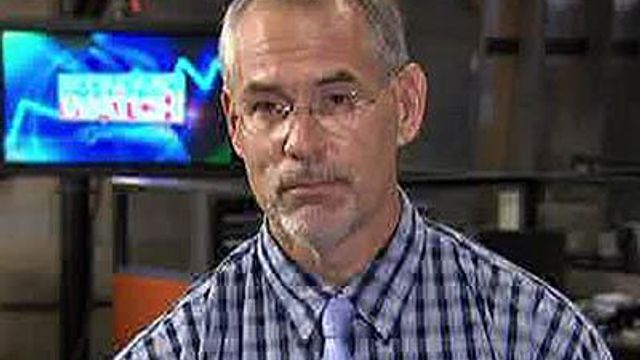RALEIGH, N.C. — North Carolina’s unemployment rate, already one of the highest in the country at 11.1 percent, will “peak” at 13 percent in the first quarter of 2010 before it begins to improve, North Carolina State University economist Michael Walden predicted Monday.
In his “North Carolina Economic Outlook” report, Walden said that “an emerging consensus” points to an economic rebound beginning “in late 2009 or 2010.”
He also said that once businesses begin hiring in the recovery that “North Carolina’s unemployment rate will fall faster than the national rate.”
However, even that improvement is projected to be no better than matching a national jobless rate of 10.3 percent by the end of next year.
“Potentially the worst recession since the 1929-1933 downturn (better known as the “Great Depression”) officially began in December 2007,” Walden wrote. “Since that date, North Carolina has lost an unprecedented 240,000 jobs.
“North Carolina’s employment losses have tracked those at the national level,” Walden added but also stressed that North Carolina’s losses have been relatively greater: 5.6 percent versus 4.3 percent for the nation since December 2007.”
In the past, Walden has forecast unemployment in North Carolina reaching as high as 14 to 15 percent.
Walden's forecast is similar to the Duke University Fuqua Business School and CFO Magazine report last month that also said an economic recovery was not expected until 2010. In May, UNC-CH's Kenan-Flagler Business School and the American Institute of Certified Public Accountants also reported a recovery was expected in 2010.
At least the economic tailspin has appeared to slow, Walden noted.
“So are there any signs of improvement in the economy? Perhaps the best that can be said at this point is that while losses continue, the rate of decline has slowed,” he wrote. “To use a military analogy, the panicked rout that occurred in the fall and winter of 2008 has turned in to an organized retreat.
“Perhaps the best evidence for this viewpoint is the downward trend recently displayed in initial unemployment claims. This measure is a good indicator of future changes in the labor market. The fact that both the national and North Carolina series have trended downward in recent weeks is encouraging.”
Still, the most recent statistics show North Carolina reporting some 25,000 new claims, and nationally the number remains above 600,000.
“Initial claims must be under 400,000 at the national level and under 12,000 in North Carolina for claims to signal an upcoming lower unemployment rate,” Walden noted.
In tracking jobs by sectors, Walden pointed out that “Only the government, leisure/hospitality, and education/health sectors have registered modest job gains during the recession at both the national and North Carolina levels.”
Job losses have been “particularly large” in construction at a rate “almost two-thirds greater on a percentage basis in North Carolina than in the nation.”
The jobless rate will remain lowest in the Triangle, Walden wrote. The highest jobless areas will be in Charlotte and the Triad.
“The worst post-war (World War II) recession in North Carolina is expected to continue throughout the second half of 2010,” Walden said. “Most economic indicators will continue to deteriorate, although at slower rates than in late 2008 and early 2009.
“However, there is an emerging consensus the economy will begin a positive turn in late 2009 or early 2010. The recent downward trend in initial unemployment claims is signaling such a move.”
In analyzing past recessions and recoveries, Walden is assuming that North Carolina’s job picture will duplicate the rebound from the 2001 recession.
“Given the structural changes that have occurred in the economy since 2000, it is assumed North Carolina’s future unemployment rate will follow the same path of the 2001 recession and recovery,” he said. “This means the state’s unemployment rate peaking in the same quarter as the national rate and then declining at a faster pace and reaching the national rate within three quarters. Hence, if the national unemployment rate peaks in the first quarter of 2010, then North Carolina’s rate will also peak then but decline and reach the national unemployment rate by the fourth quarter of 2010.”
In a recent column exploring why North Carolina’s jobless rate has soared so high, Walden noted the state’s reliance on manufacturing jobs.
“North Carolina is still a manufacturing state,” he said. “The proportion of our workforce engaged in manufacturing is 30 percent higher than the national average. Manufacturing always gets hit harder during recessions for one simple reason: consumers and businesses can postpone purchasing manufactured goods.”
The state’s economic woes are reflected in metro area jobless rates:
In Raleigh-Cary, unemployment increased to 8.9 percent in May from 4.6 percent a year ago and 8.3 percent in April.
Joblessness in Durham-Chapel Hill climbed to 8.1 percent from 7.3 percent in April and nearly double the 4.6 percent rate of a year ago.
Fayetteville’s jobless rate hit 9.2 percent in May, up from 5.9 percent for the same month in 2008 and up from 8.4 percent in April.
In Rocky Mount, the May jobless rate rose to 14.2 percent from 8.1 percent last May and 8.1 percent in 2008.
Goldsboro’s jobless rate jumped to 9.2 percent from 5.6 percent last May and from 8.7 percent in April.
In Burlington, unemployment increased slightly to 12.2 percent in May from 12 percent in April but is more than double the 5.8 percent of May 2008.






